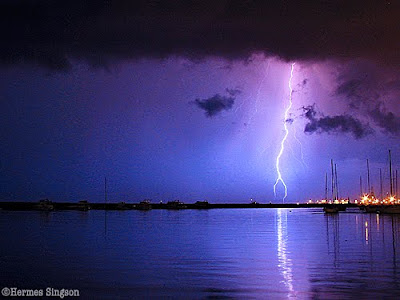Upgrade to 4.0
After six months of using the Nikon Coolpix E3700, I had an upgrade from 3.2 to 4.0 mega pixel. I had to exchange the E3700 for a Canon G2. At first I was a bit hesitant, but then, I thought of the G2’s better features and better quality of image.
The Canon G2 is a 4.0 mega pixel point-and-shoot camera, that shoots RAW files, focal length of 34mm to 102mm, an aperture that opens up to f2.0, with 50 ISO setting for less noise, and a swiveled LCD screen that is very good for taking overhead and ground level shots. It is easy to use, especially when you work on your exposures in combination with the focusing, or vice versa.
The G2 in my opinion is a very good point-and-shoot camera that performs more than I expected. We have used it in some of our projects, and even made photographic blow-ups that the quality is absolutely acceptable. But I will let you be the judge on that...
Here are some of the shots I made with the Canon G2:
The Canon G2 is a 4.0 mega pixel point-and-shoot camera, that shoots RAW files, focal length of 34mm to 102mm, an aperture that opens up to f2.0, with 50 ISO setting for less noise, and a swiveled LCD screen that is very good for taking overhead and ground level shots. It is easy to use, especially when you work on your exposures in combination with the focusing, or vice versa.
The G2 in my opinion is a very good point-and-shoot camera that performs more than I expected. We have used it in some of our projects, and even made photographic blow-ups that the quality is absolutely acceptable. But I will let you be the judge on that...
Here are some of the shots I made with the Canon G2:
Manila Bay, © Hermes M. Singson
Manila Yacht Club, © Hermes M. Singson
Pasig River, © Hermes M. Singson
Manila Bay, © Hermes M. Singson
Manila City Hall, © Hermes M. Singson
Lightning, © Hermes M. Singson
Please do not use any of my images on websites, blogs
or other media without my explicit permission.
© All rights reserved.
Labels: Canon Camera, colorful photos, photography, point-and-shoot camera



















